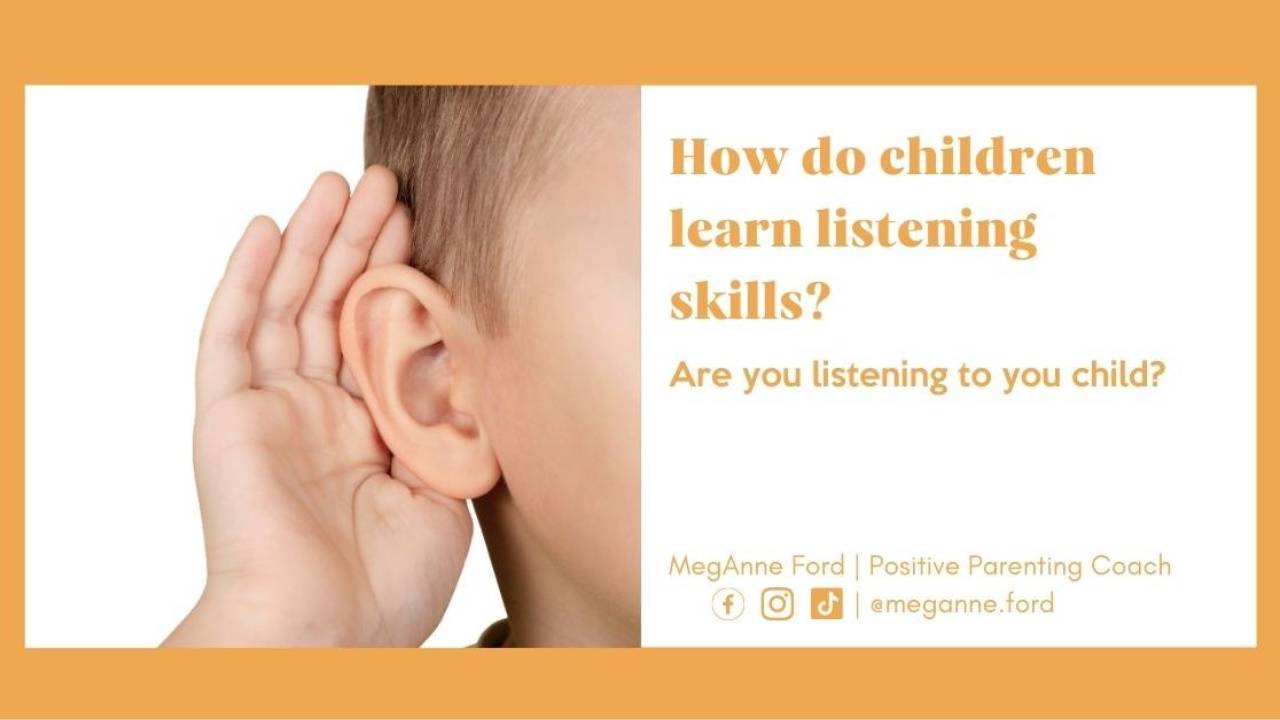
Stop Yelling, Start Connecting with Effective Communication
May 10, 2024
Have you had enough of all the yelling in your home?
You're not alone!
Many parents fall into the trap of frustration-fueled shouting matches. There's a better way. There are powerful communication strategies to replace the yelling with genuine connection, building a stronger, happier relationship with your child.
Effective communication is the cornerstone of any successful parent-child relationship. As parents, we want to connect with our children, understand their needs, and guide them through life's challenges. But how do we ensure that our communication is truly effective?
Active listening, setting clear boundaries, and using effective language help you build strong, open, and meaningful connections with your kids.
Understanding the power of words, non-verbal cues, and effective communication and its impact on your child's emotional well-being, self-esteem, and behavior is empowering for the parent as well as the child.
Takeaways:
- Yelling often results from unclear expectations and boundaries, which can be replaced with calm, effective communication strategies.
- Active listening and understanding non-verbal cues can transform tense moments into opportunities for connection with your child.
- Setting clear expectations and using "I" statements fosters cooperation and trust without resorting to shouting.
- Conflict can be a constructive opportunity to strengthen emotional connections and build a healthier parent-child relationship.
The science behind effective communication
Yelling is a shortcut to getting your point across, but science tells a different story. Our brains actually shut down to learning and problem-solving when under stress, making yelling counterproductive. Effective communication activates the listening centers in your child's brain, fostering empathy and cooperation. By creating a calm and respectful environment, you'll not only get your message heard but also encourage open communication, building a stronger bond with your child.
Patience is key when it comes to effective communication with children. Just like adults, kids don't always switch into "listening mode" instantly. Their body language, facial expressions, and even the environment can all offer clues about their receptiveness. Taking a moment and observing these signs can help you choose the right moment to connect and ensure your message lands effectively.
Frustrated because your child seems to tune you out? Understanding brain states is a game-changer! My online parenting classes help parents decode nonverbal cues and identify when their child is receptive to communication. This way, you can tailor your approach, ensuring your message resonates and fostering a truly connected relationship with your child.
Trying to communicate with anyone, especially a child, when they are in the RED or lower (reptilian) brain is like talking a wall. Once the wall is up, it is the job of the adult to show with words and, more important at this time, body language that ensures that the child is safe.
Effective Communication Goes Beyond Just Talking
Effective communication with your child goes beyond simply talking at them. Children, just like adults, have different communication styles. Some may thrive on clear and concise instructions, while others might respond better to visual aids or open-ended questions.
Understanding these preferences allows you to tailor your approach and ensure your message is received loud and clear. By incorporating active listening, body language awareness, and adapting your communication style, you'll create a space where your child feels truly heard and understood.
This is not something that comes naturally when you become a parent. If you were brought up in the USA during the '80s & '90s, chances are that you were modeled this way of thinking at home or at school. But the good news is that you can learn new strategies and practice new strategies. As a parent coach, I support my clients in implementing effective communication with their children throughout a normal day.
Here are few different communication ideas:
- Direct and Clear: Simple, concise statements work well for giving instructions or setting expectations. The less words the better.
- Visual Aids: Pictures, charts, or diagrams can be helpful for younger children or those who learn visually. I highly recommend that this is child-led, meaning that the child makes or writes it themselves.
- Open-Ended Questions: Encourage dialogue and critical thinking by asking questions that go beyond "yes" or "no" answers.
- Active Listening: Pay close attention to your child's verbal and nonverbal cues, showing you're engaged in the conversation.
- "I" Statements: Use phrases like "I feel...because..and I wish" to express your feelings without blaming your child.
- Positive Reinforcement: Acknowledge your child in the small moments.
- Storytelling and Role-playing: Use relatable stories or act out scenarios to teach social skills and problem-solving in a fun way. Practice outside the moment.
Active listening techniques for parents
Active listening isn't just about waiting for your turn to talk. It's about building a bridge of understanding with your child. Put down distractions, make eye contact, and use body language that shows you're fully present. Reflect back on what you hear to confirm your understanding and encourage them to elaborate. Ask open-ended questions to delve deeper and validate their feelings. This creates a safe space for them to express themselves freely, fostering connection instead of walls of frustration.
Again, this is a skill that can be learned and improved upon. With my clients, I model active listening, and sometimes, I do a great job, and other times, I miss the mark. Here is the truth with all relationships: when you have a secure relationship, it is all about the rupture and repair.
Many of my clients tell me that it feels weird when I actively listen to them, meaning it feels foreign for another person to truly connect to them, and if they do not know how that feels, they can not be expected to teach their children what connection truly feels like.
My clients are excited for the next time their child goes off about not wanting the blue cup because they understand that connecting with the child, seeing from the child's point of view, is not about giving in or accepting the behavior of yelling or throwing, but rather truly connecting and saying "Hey bud, you really wanted that blue cup tonight, and you are sad cause the cup is getting washed."
Non-verbal communication cues for parents
It is easy to skip over the non-verbal communication of the child. Here are a few to keep in mind the next time you have an interaction with your child.
Openness and receptiveness:
- Eye contact: When your child makes eye contact while you're talking, it suggests they're engaged and listening.
- Body language: A relaxed posture, uncrossed arms, and leaning in indicate they're open to communication.
- Facial expressions: A smile, raised eyebrows, or a head tilt often show curiosity and receptiveness.
Closed-off or frustrated state:
- Avoiding eye contact: Looking away frequently might suggest disinterest, frustration, or defiance
- Crossed arms or legs: This can be a sign of defensiveness or feeling shut down.
- Fidgeting or nervous movements: Tapping feet, squirming, or picking at clothing can signal anxiety or a desire to withdraw.
- Facial expressions: Frowning, pursed lips, or furrowed brows often indicate anger, sadness, or worry.
If you feel like you're constantly locked in a battle of wills with your child, next time, try to read their non-verbal cues. Are they telling you they are in their lower brains and need connection? With practice, you will transform those tense moments into opportunities for connection.
Set clear expectations and boundaries rather than yelling
Raising your voice is often a symptom of unclear expectations and boundaries.
Yelling might seem like the quickest way to get your point across, but it often backfires. Yelling triggers the fight-or-flight response in your child, shutting down their ability to listen and reason. Once a child is in a stressful state, it is like talking to a brick wall; it is the time to slow down, connect with the child, and offer co-regulation in order to help the child work through their emotions and regain their green brain.
This is a skill that adults can learn and utilize in stressful moments. In order to co-regulate, the adult needs to be able to regulate themself and feel they are safe. If they cannot regulate their emotions, it is time to take a break. Again, walking away is a skill, and understanding that skill and how to use it is important to keep you and your child safe.
When we focus on setting clear expectations and boundaries from the start, this is what I call doing the pre-work. This creates a predictable and safe environment where your child knows what's expected and the consequences of not meeting them. Calmly explain the rules, offer choices when possible, and follow through with consistent consequences. This approach leads to better understanding, cooperation, and a stronger parent-child relationship, all without resorting to shouting.










